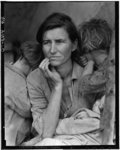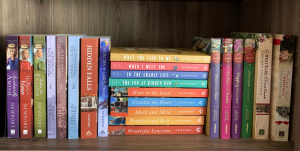 Growing up and living during my younger adult years in Illinois, I suppose I knew about as much about the Great Depression as anyone in my circles. Stock market crash. High unemployment. The Grapes of Wrath. Sometimes my mother told a story that drew me past the facts to the emotions.
Growing up and living during my younger adult years in Illinois, I suppose I knew about as much about the Great Depression as anyone in my circles. Stock market crash. High unemployment. The Grapes of Wrath. Sometimes my mother told a story that drew me past the facts to the emotions.
But it was after I moved to Colorado about twenty years ago, I acquired a more visual understanding of the the Depression. Colorado was one of several states known as the “Dust Bowl,” where enormous clouds of dirt literally blowing in soil from other states in the middle of a drought. Dust storms turned the sky black in the middle of the day as tons of soil blew off of empty farm fields across several states. It made people sick. It covered surfaces inside of homes. No wonder farmers had a hard time making a living.
 It wasn’t until this mid-life season that I paid any attention to the stunning photography of Dorothea Lange, who worked for the Farm Security Administration to document the real conditions of people struggling to survive. She’s one of America’s most prominent photojournalists. You can see thousands of her photos at the Library of Congress site. You might even realize that you recognize some of them from an old school textbook.
It wasn’t until this mid-life season that I paid any attention to the stunning photography of Dorothea Lange, who worked for the Farm Security Administration to document the real conditions of people struggling to survive. She’s one of America’s most prominent photojournalists. You can see thousands of her photos at the Library of Congress site. You might even realize that you recognize some of them from an old school textbook.
My latest book, Hope in the Land, releases in a few days. I would never compares myself to the achievement of Dorothea Lange, but I will claim her work as an inspiration for my goal of capturing in some small way this defining era of US history.
The land itself held the future of the country. Hope in the literal land–the soil of farms–waned in many areas. Despair rolled like black clouds across the land–the nation. What might it take for families to survive? What does it take for you to survive when black clouds roll through your life?
These are the questions of Hope in the Land.




